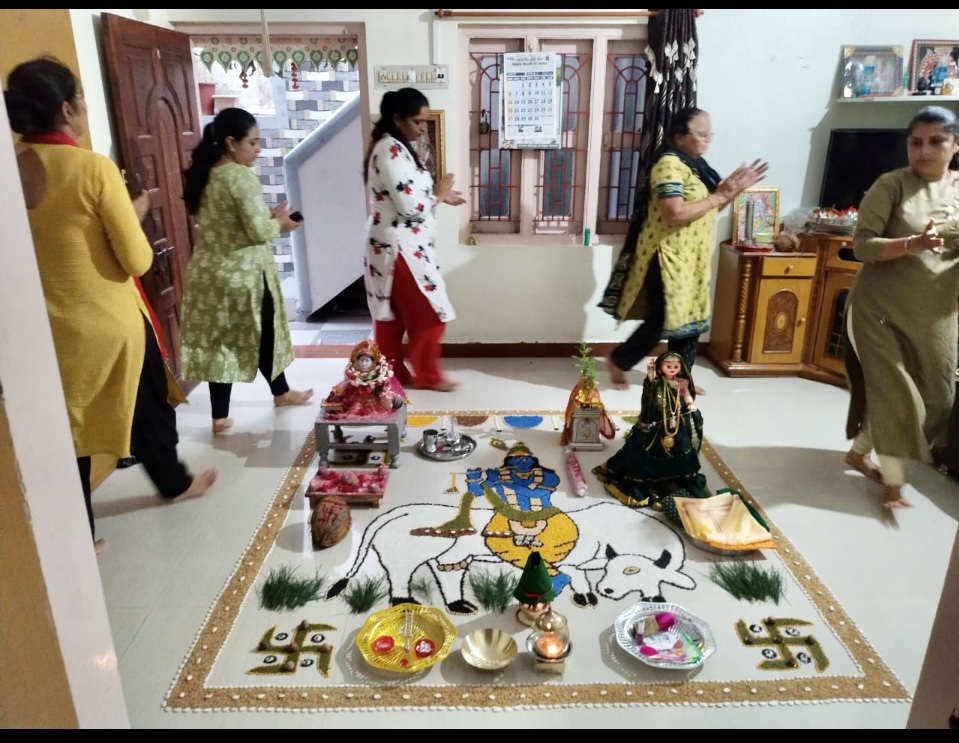Purushottam month stands out from the rest of the twelve months due to its unique occurrence pattern. Unlike the other months, it appears only once in three years, making it distinct and special. The significance of this month is eloquently explained in the Puranas, particularly in the Purushottam Maas Katha. This year in 2023, the month is from 16th July to 16th August.
Initially referred to as Mal Maas, this month lacked importance and recognition. It was often dismissed due to its name and perceived lack of association with any specific deity. This, however, changed when Mal Maas sought refuge with Shri Vishnu, sharing its plight of being overlooked and unappreciated. In response, Bhagwan Vishnu bestowed divine qualities upon Mal Maas, renaming it Purushottam month and declaring himself as its governing deity. This transformation elevated the significance of the month, making it a time for chanting, worshiping, and offering donations to Shri Vishnu.
In the Luni-Solar calendar, an additional Lunar month emerges after approximately 32 months and 16 days have passed. The Lunar orbital period around the Earth is approximately 29.53 days, thus defining the duration of a Lunar month. An aggregation of twelve of these lunar months corresponds to a total of 354 days within the Solar year, a timeframe which inherently extends to 365 days. In order to harmonize the Lunar months with the Solar year, an intercalary month is periodically introduced every third year within the Lunar calendar. This supplementary month leads to a total of 13 months every three years. In astrological terms, the phenomenon characterized by the Sun transitioning from one zodiac sign to another is referred to as Sankranti. The Sun, as per this framework, undergoes frequent shifts in its zodiacal position, occurring approximately once a month. However, there exists a month where the Sun’s zodiacal position remains unchanged, and this period is designated as Mal Maas or Adhik Maas, or Purushottam Maas.
Purushottam Maas holds a distinct significance with Shri Vishnu as the overseer of this month. While certain auspicious activities such as marriages, naming ceremonies, and housewarming rituals are generally abstained from during this time, engaging in spiritual practices and rituals like worship, recitation, mantra chanting, penance, and fasting are immensely advantageous. It is believed that acts of worship conducted during this month yield results that are magnified by a factor of ten.
Purushottam signifies an embodiment of the finest qualities, making this month dedicated to personal growth, self-evaluation, contemplation, introspection, and the purification of accumulated stresses from the past three years. It serves as a period for rejuvenating physical, mental, emotional, and spiritual well-being. Purushottam Maas is also characterized by its unique days, such as Ekadashi, Amavasya, and Purnima Tithi, each carrying its own auspiciousness and yielding specific results. Fasting on Ekadashi and listening to the Purushottam month’s story during this period are considered highly beneficial.
The arrival of Purushottam month every three years prompts Bhajans and prayers dedicated to Bhagwan Vishnu in various locations. Undertaking auspicious endeavors during this month yields manifold results, aligning with its reputation as a prime time for religious activities and positive deeds. Performing the ritual of reciting the Bhagavata Katha (also known as Shri SatyaNarayan Katha) during Purushottam month holds special significance. Conducting evening Puja and lighting ghee lamps in front of Lord Vishnu are also considered auspicious practices.
Throughout the month, consistently lighting a ghee lamp while reciting Shri Vishnu’s name and relevant Mantras is recommended. In many parts of India and the diaspora women take the lead in worshipping Shri Vishnu and his avatars while giving importance to the Divine Feminine counterpart as well. One such ritual celebrated by my family in Western India is observed in the featured image; the ladies have gotten together to create intricate Mandala design consisting of Shri Krishna (Shri Vishnu’s avatar) and decorating it with locally grown lentils, while highlighting the Feminine aspects including a vibrant Radha, adorned in green. The ladies have set up an alter for the SatyaNarayan Katha (not featured) and perform shodashopachara puja to their Mandala creation. These stages are referred to as the “pancha upachara,” and they align with the five senses: touch, hearing, smell, sight, and taste. The pancha upachara encompass gandham, pushpam, dhoopam, deepam, and naivedyam. The act of gandham involves touch through the application of various pastes and powders onto the murti. The stage of pushpam engages the sense of hearing as the deity’s name is chanted during the offering of flowers. Dhoopam utilizes sound through the act of offering incense. Deepam caters to the sense of sight by presenting light as an offering. And, naivedyam caters to the sense of taste through the presentation of food offerings to the Divine, which are then blessed and distributed to devotees.
In summary, Purushottam month distinguishes itself as an extraordinary period that occurs once every three years. Its transformation from the disregarded Mal Maas to the revered Purushottam month showcases the power of Bhagwan Vishnu’s intervention in our lives. This time is ideal for devotion, good deeds, and religious observances, with various days carrying specific auspiciousness. The rituals associated with Purushottam month, including Bhagavata Katha recitation and lamp lighting, hold great spiritual significance.
